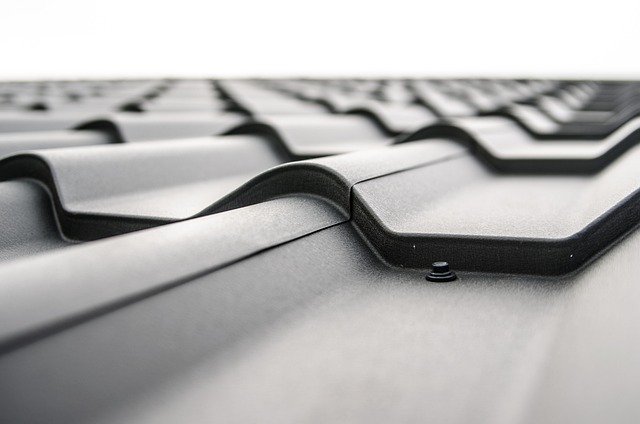Roof Installation through a full-service provider offers multiple advantages, including expert guidance tailored to specific needs, efficient execution, high-quality materials, and streamlined processes that save time. This is ideal for new constructions or renovations, ensuring a secure, durable roofing system. These professionals manage every stage from consultation to post-installation maintenance, guaranteeing peace of mind through warranties on labor and materials. The optimal roof type depends on local climate, building style, and structural integrity, with the installation process meticulously navigating critical steps for a sturdy, weatherproof barrier. Durable, suitable materials selected based on weather conditions, aesthetics, budget, and architectural style ensure longevity, while regular maintenance prevents costly repairs and issues. DIYing complex installations or hiring unproven contractors are common mistakes; instead, choose a licensed, insured company with experience balancing quality and cost.
“Considering a new roof? Go beyond basic repairs with full-service roof installation, a comprehensive solution for your roofing needs. This guide dives into the process, benefits, and key considerations for transforming your home’s exterior. From understanding different roof types to choosing materials and maintenance tips, we break down everything you need to know about full-service roof installation. Discover why hiring specialists can ensure a durable, beautiful new roof that protects your home for years to come.”
Understanding Full-Service Roof Installation: A Comprehensive Guide

Full-service roof installation refers to a comprehensive process where a professional contractor handles every aspect of your roofing project, from initial consultation and measurement to final inspection and roof replacement if needed. This approach offers several advantages for homeowners looking to upgrade or repair their roofs. By opting for full-service, you benefit from expert advice tailored to your specific needs, ensuring the job is done efficiently and with high-quality materials.
This type of service includes detailed assessments, design consultations, material selection assistance, and skilled labor for installation—all under one roof. It streamlines the often complex process of roof replacement or repair, saving you time and effort while guaranteeing a secure and durable roofing system. Whether it’s a new construction project or a renovation, understanding full-service roof installation can help guide your decisions, ensuring a seamless and successful outcome for your home’s most important protective layer—your roof.
The Benefits of Hiring a Full-Service Roofing Company

Hiring a full-service roofing company for your roof installation offers numerous advantages that go beyond just getting a new roof. These professionals bring a wealth of expertise and resources to the table, ensuring a seamless and stress-free experience from start to finish. They handle every aspect of the project, from initial consultation and measurement to design and material selection, all the way through to final inspection and maintenance post-installation.
This comprehensive approach means you benefit from expert advice tailored to your specific roof needs. Full-service companies can provide advanced solutions for complex roofing issues, offer a wide range of high-quality materials, and ensure proper installation techniques that promote longevity and durability. Moreover, they often include warranties on their labor and materials, giving you peace of mind and protection against future repairs or replacements.
Types of Roofs and Their Suitability for Full-Service Installation

When considering a full-service roof installation, understanding the types of roofs and their suitability is paramount. There are several popular options available, each with unique characteristics and benefits. Flat roofs are often chosen for commercial properties due to their simplicity in design and low maintenance requirements. They are ideal for areas where snow accumulation isn’t a concern, as they can efficiently drain rainwater.
Sloped or pitched roofs, on the other hand, are more common in residential settings. These roofs are designed to shed water effectively through their angle, which also helps to prevent ice damage during colder months. The suitability of a particular roof type for full-service installation depends on factors like local climate, building style, and structural integrity. Professional installers can assess these elements to ensure the chosen roofing system aligns perfectly with your needs.
The Process: Step-by-Step Breakdown of Roof Installation

The process of roof installation involves several meticulous steps ensuring a durable and weather-resistant barrier for your home or building. It begins with thorough inspection to assess structural integrity, identify potential issues, and determine the most suitable roofing materials. Once approved, the old roof is removed, along with any damaged underlayment or flashing. This step is crucial for creating a clean slate upon which new components can be securely installed.
Next, ropers install new underlayment, often reinforced with a synthetic fabric, to protect against moisture and provide an extra layer of insulation. The chosen roofing materials—shingles, tiles, or metal panels—are then precisely laid out according to the building’s design. This involves careful alignment and securing them in place with nails or screws. Finally, flashing is installed around roof penetrations like chimneys and vents, sealing potential entry points for water.
Choosing the Right Materials for Your Full-Service Roof

When undertaking a full-service roof installation, selecting the appropriate materials is paramount for ensuring durability and long-lasting protection. The right roofing system should be chosen based on factors like climate, architectural style, budget, and personal aesthetic preferences. For example, in regions with frequent heavy rainfall or snowfall, waterproof and weatherproof materials are essential to prevent leaks and damage. Metal roofing, known for its superior strength and resistance to corrosion, can be an excellent choice for such areas. Alternatively, asphalt shingles offer a more cost-effective option, providing adequate protection for milder climates.
Additionally, considering energy efficiency is crucial in today’s eco-conscious world. Reflective or cool roofs, made from materials like reflective paint or tiles, can significantly reduce the amount of heat absorbed by the building, thereby lowering cooling costs. Insulation is another critical component, helping to regulate indoor temperatures and improve overall energy efficiency. By carefully considering these factors and consulting with roofing professionals, homeowners can make informed decisions, ensuring their roof installation stands the test of time while aligning with both functional and aesthetic requirements.
Maintenance and Longevity: Ensuring Your New Roof Lasts

A new roof is a significant investment, so it’s crucial to understand how maintenance plays a vital role in ensuring its longevity. Regular upkeep is key to keeping your full-service roof installation in top condition for years to come. Simple tasks like inspecting for loose or damaged shingles, cleaning gutters, and sealing any potential leaks can prevent costly repairs down the line.
Investing in routine maintenance checks with a professional roofer is an excellent way to stay ahead of issues. They can identify problem areas, provide expert advice, and offer tailored solutions. By addressing even the smallest concerns promptly, you’ll extend the life of your roof, ensuring it continues to protect your home effectively against the elements.
Common Mistakes to Avoid During Full-Service Roof Installation

When it comes to full-service roof installation, there are several common mistakes that homeowners often make. One of the biggest blunders is attempting to DIY the project, especially if it involves a complex or large roof. While enthusiasm is admirable, roofing work requires specialized skills and knowledge to ensure safety and structural integrity. Improper installations can lead to leaks, reduced energy efficiency, and even serious safety hazards over time.
Another mistake to avoid is selecting an unproven contractor without thorough research. It’s crucial to choose a reputable company with experienced professionals who are licensed and insured. Don’t be swayed by the lowest quotes; instead, focus on finding a balance between quality and cost. Neglecting regular inspections and maintenance after installation is also detrimental. Regular checks can help identify potential issues early, ensuring your roof remains in top condition for years to come.
